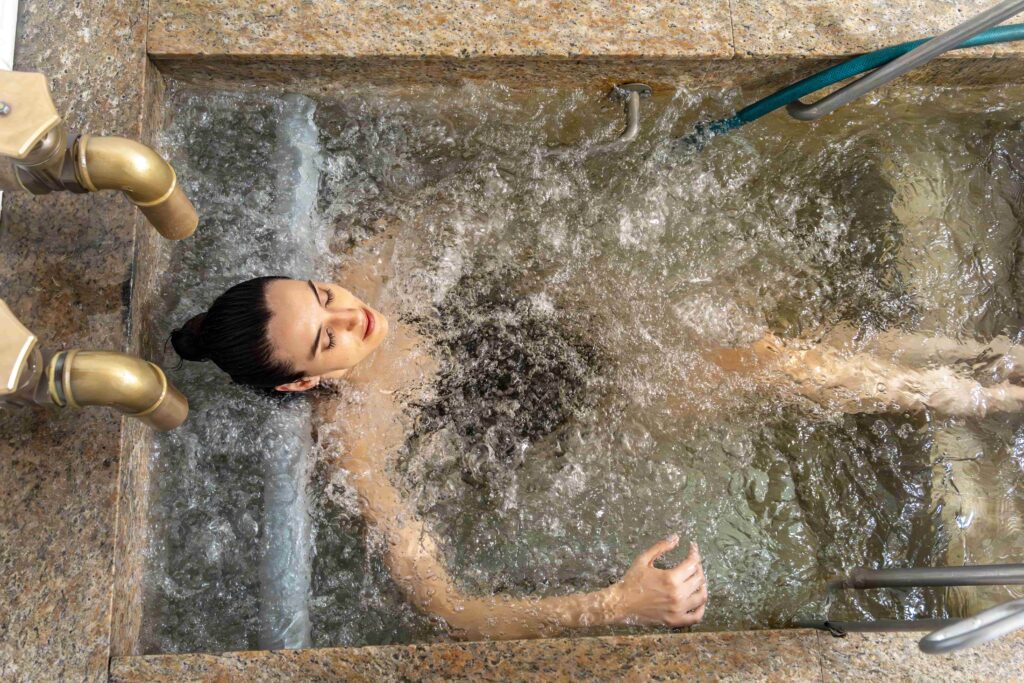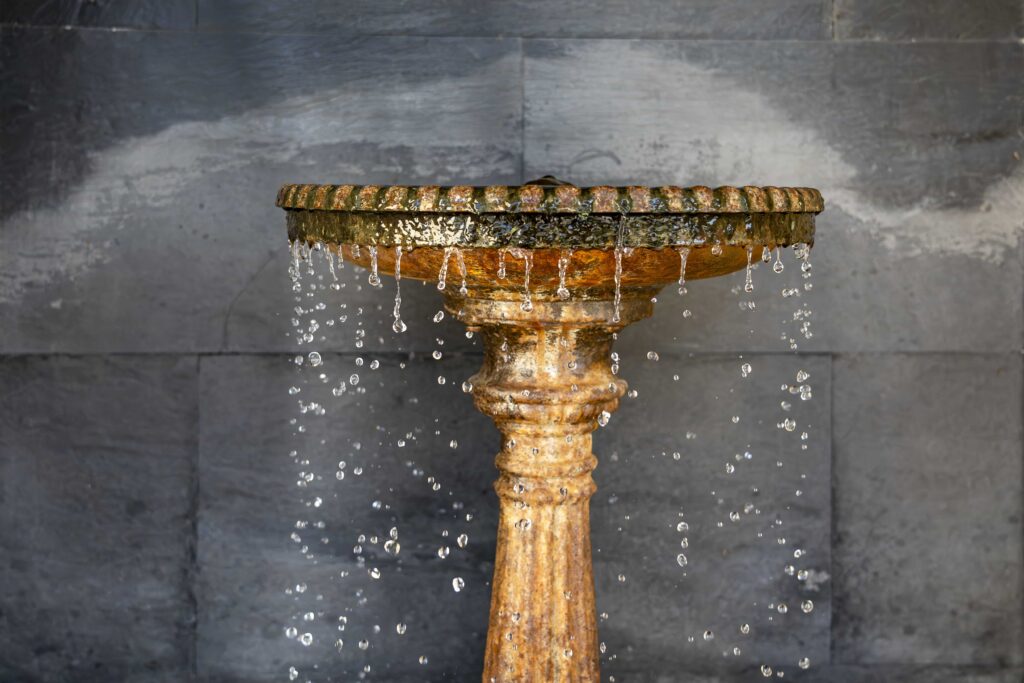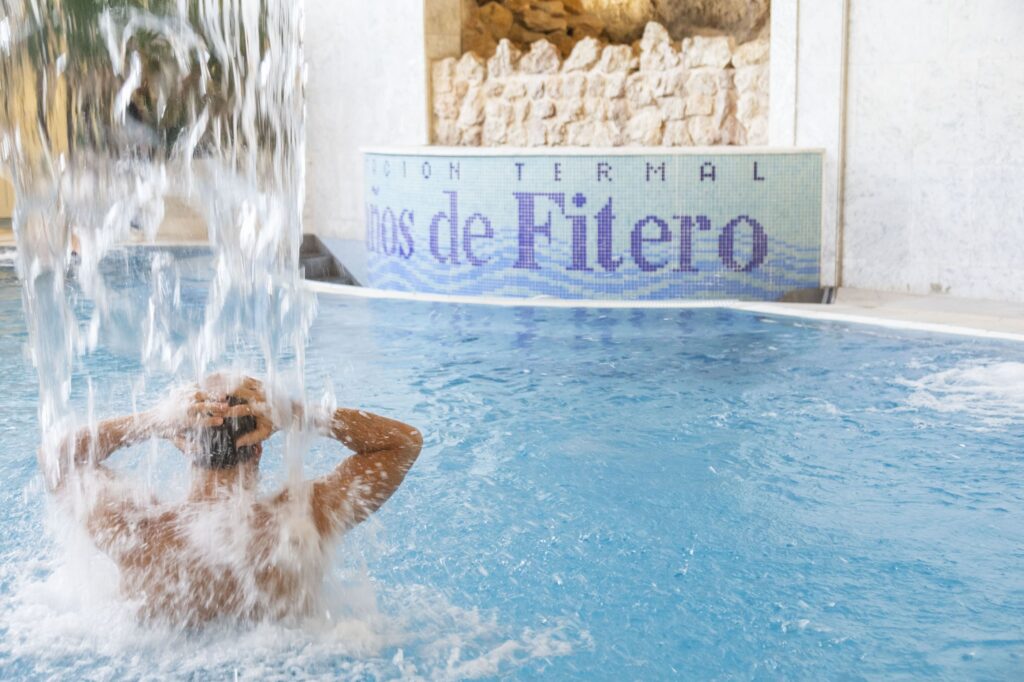Sometimes nature gives us wonders… and we’re not just talking about its gifts for our eyes, but also for our health, as is the case with thermal waters.
In case you are not sure what hot springs are, they are underground waters that emerge to the surface of the earth with a temperature higher than the average annual temperature of the place where they are.
Natural hot springs are heated by passing through deep layers of the earth and coming into contact with geothermal materials. However, what is most remarkable about them are their properties, which go beyond simple relaxation. In fact, their benefits make them a unique source of well-being.
Do you want to know more? In this article we tell you everything you need to know about thermal waters.
What are the benefits of thermal waters?
Thermal waters are particularly suitable for hydrotherapy treatments, which is why they form part of places such as spas. But do you know why?
As we have already mentioned, natural thermal waters have a very special composition. Due to their high mineralisation and temperature, they are loaded with therapeutic properties that can significantly improve our health and wellbeing.
Among their many benefits, the following stand out:
- Relief of muscle and joint pain. Thanks to their minerals and temperature, thermal waters are ideal for relaxing muscles and relieving ailments such as rheumatism or arthrosis.
- Improved blood circulation. The heat of the thermal waters stimulates our circulation and this increases the oxygenation of our body, which helps to reduce problems such as hypertension.
- Properties for the skin. The mineral richness of these waters can also be used to soothe skin problems: acne, psoriasis, dermatitis…
- Relaxing and anti-stress effect. Immersing yourself in thermal waters is an experience of total disconnection, perfect for reducing stress and improving the quality of your sleep.
Did you know that the properties of the Fitero Spa water can provide you with all these benefits and many more? They are mineral-medicinal and hyperthermal waters, as their temperature rises to 52ºC.
This makes them particularly suitable for treating certain ailments, such as rheumatic or musculoskeletal diseases, anxiety disorders, bronchopathies, chronic pharyngitis and laryngitis, as well as recurrent colds. They also help in functional rehabilitation and peripheral arterial processes. In addition, they provide therapeutic benefits that promote relaxation, recovery and general wellbeing, making them an ideal option for healthy leisure at any stage of life. Incredible, isn’t it?
Types of thermal waters
Now you know perfectly well what thermal waters are and what benefits some of them can bring you, such as those of our Spa. What we haven’t told you yet is that there are several types of thermal waters: we can classify them according to different criteria, such as their temperature, their composition or the thermal springs they come from.
In this section, we will focus on the types of thermal waters according to their geological origin:
- Volcanic or magmatic thermal waters. These are those that come from regions close to volcanoes, whose flow is constant. In general, they are hyperthermal (over 50ºC) due to their proximity to magma. They have a high concentration of minerals, such as sulphur or magnesium.
- Telluric thermal waters. Normally, telluric waters have mesothermal temperatures (35-40ºC), a variable flow and a lower mineralisation compared to volcanic waters. These waters can have two main origins:
- Tectonic. They emerge due to tectonic plate movements that allow water to rise to the surface through fractures in the rocks.
- Fossil. These are waters that have remained trapped in deep layers of the earth for millions of years, obtaining a very beneficial mineral composition.

Temperatures in thermal waters
Another fundamental aspect in classifying thermal waters is their temperature, which also influences the benefits they can offer.
- Based on this factor, we can divide them into three types:
- Hyperthermal, i.e., waters with temperatures above 45°C.
- Mesothermal, which are between 35°C and 45°C.
- Hypothermal, i.e. between 20°C and 35°C.
- Cold, when they are below 20°C.
As you can imagine, the higher the temperature of a hot spring, the more beneficial to health it can be.
Components of thermal waters
Undoubtedly, the great secret of thermal waters lies in their rich mineral composition.
Depending on their composition, we can find:
- Chlorinated waters, rich in chlorides.
- Sulphate waters, loaded with sulphates.
- Sodium waters, abundant in sodium.
- Calcium waters, whose main component is calcium.
- Radioactive waters, in which radon predominates.
Of course, it is also possible to find waters made up of all these components at the same time and in generous quantities, such as those of the Balneario Fitero. Would you like to try them?

Precautions to take on your visit to a thermal spa
Of course, before coming to a thermal spa like ours you should be cautious:
- Consult a doctor if you have any health problems. There are cardiovascular diseases that may require medical supervision before using thermal waters. Fortunately, in our spa we have specialised medical staff who will be happy to help you if you need it.
- Hydrate well. Drink water before and after your session to avoid dehydration.
- Avoid alcohol. It is not advisable to combine the relaxation of our thermal waters with alcoholic drinks, as it can have negative effects on your body!
Having said that, after reading this article, you’re sure to feel like enjoying the unique benefits of the hot springs, right?
In that case, make your reservation at Balneario de Fitero and start flowing, you’ve earned it!

